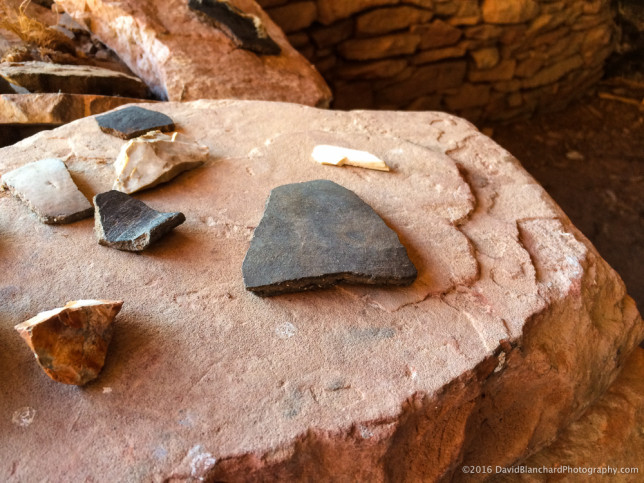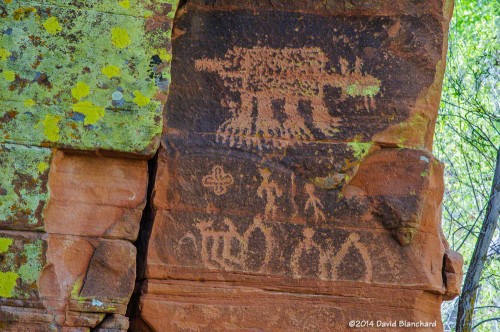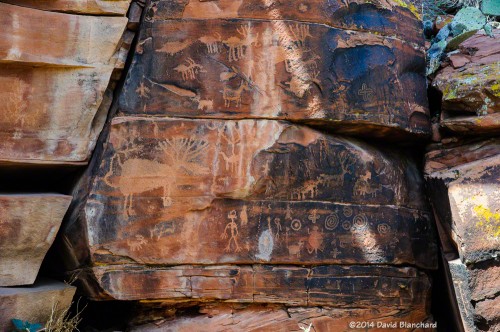The canyons that surround Sedona are known to contain many Native American dwellings and other artifacts. Visiting these sites can be an exciting adventure—especially if you don’t actually know where they are.
I suppose there are web sites and other sources of information that might show where these are and even include photographs and GPS coordinates. I’m less interested in visiting these web sites to get precise information than I am in exploring and finding them on my own. I certainly won’t find many this way—but that’s okay. It’s the adventure that provides the interest.
So we have been visiting and re-visiting some canyons in the area and trying to determine where dwellings might exist. There are several ways to do this. One is to look carefully at the cliff walls and decide if these might support a dwelling. The next is to look for faint paths created by others that lead to the hidden sites within the canyon. And the third is to listen for loud folks who’ve found something and follow them ;-)

Methods two and three above worked in our favor recently and we visited this dwelling. It was well preserved and there were some pottery sherds (also sometimes called “shards”) as well as corn cobs. As is often the case, visitors had picked up these artifacts and placed them on rocks or walls for easy viewing—although most archeologists suggest they be left where they were found.


Our appetites whetted, we plan to visit these canyons again and try to find more
sites.

